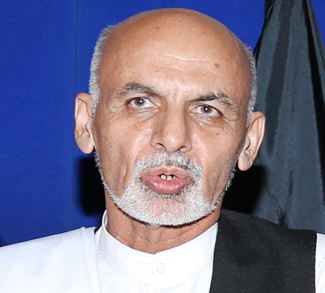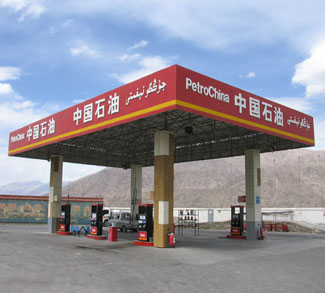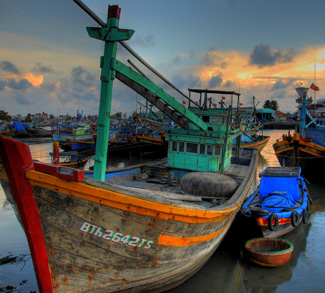The departure of foreign combat troops from Afghanistan in late 2014/2015 has increased insecurity and attacks against Afghan National Army and Afghan National Police in the northern part of the country. Ironically, the northern part of Afghanistan was largely pro-NATO during the 2001 military campaign, and parts of the Northern Alliance assisted NATO on the ground against the Taliban. Back then, most of the big battles were fought in the southern part of the country, largely around Helmand and Kandahar. This article will examine the Taliban`s decision to shift its focus northward.
On March 24, 2015, Afghan President Dr. Ashraf Ghani visited the White House to negotiate a slowdown of the US troop withdrawal from Afghanistan. The result was a deal to keep at least 10,000 soldiers, ostensibly to train and advise Afghan soldiers. On March 26, President Ghani addressed the Council on Foreign Relations (CFR), where he announced his intention to rebuild the Silk Road by promoting regional cooperation. Dr. Ghani mentioned that Afghanistan will have a healthy economy with the cooperation of Iran, China, and India. Pakistan wasn’t mentioned as a partner in this new regional framework. This might have upset the government of Pakistan, which in turn may encourage Islamabad and its Inter-Services Intelligence (ISI) to increase support to Taliban insurgent groups in the northern part of the country, in order to discourage the Ghani administration from implementing the Silk Road initiative.
It must be stressed that security and stability are absolutely necessary in the northern part of Afghanistan in order to start the construction of necessary infrastructure, as most of the roads to China will pass through the northern provinces.
Silk Road Initiative
The Silk Road initiative will connect the remote areas of the northern Badakhshan province with northwestern China. Therefore, Afghanistan and China will have to coordinate the construction of modern roads and infrastructure to support the plan. The Asian Development Bank has already started construction, financing the construction of 44 km of road, and they still have to build 108 km of road stretching from Baharak to Ishkashem in Afghanistan. The remaining 308 km will have to pass through the Wakhan Corridor in Badakhshan to reach China.
The Ghani Administration has already reached a deal with the Chinese government, who has agreed to cover the cost of this road construction. Once this road is completed, both states will enjoy an improved economic relationship and it will enormously benefit the Afghan economy. However, this new neoliberal approach has disappointed the Pakistani government. Thus, the ISI’s war strategy in Afghanistan may have shifted, explaining the increase in instability observed in the northern part of Afghanistan. Specifically, the ISI has financed, provided military intelligence, and weaponry to the Taliban and other Wahhabist/Salafiste groups to fight against the Afghan National Army in the north. The Pakistani government believes that by supporting insurgent groups in the northern part of Afghanistan, it will eventually discourage the establishment of the Silk Road economic partnership between China and Afghanistan. It is significant to understand that the ultimate goal of Pakistan is to dominate Afghan politics by shaping the Afghan politics in a way that favors Pakistani interests in the region. Pakistan does not want to see a powerful Afghan central government capable of challenging Pakistani interests in the region or a powerful Afghanistan capable of allying with India in order to undermine Pakistan’s sphere of influence in South Asia.
Afghan National Army Military Operations
This year, the Taliban spring offensive surprised the Afghan National Army (ANA) by attacking military outposts in northern Afghanistan. Taliban attacks in the north have significantly affected the security of Balk, Kunduz, Faryab, Sar-e-Pul, Baghlan and Badakhshan provinces.
As a result, the ANA has launched multiple military operations in the north. Operation Alborz Yak was launched in Balk province on April 30 to defeat Taliban fighters from the Alborz Mountains in Chamtal district. And similarly, the ANA is planning to launch another large military operation in Sar-e Pul province. Several weeks ago, Taliban fighters launched a large attack against police and military outposts in Kunduz province and they managed to capture large swaths of territory. The ANA deployed 2,000 soldiers to save the province of Kunduz from falling under Taliban control. Clashes between ANA and the Taliban took place in Imam Sahib, Qala-eZal, Gor Tepa, Dasht-e-Arche, and Ali Abad districts in Kunduz. After six days of fighting, the ANA managed to kill 222 Taliban fighters and capture specific areas/locations under Taliban control. In addition, the National Directorate of Security (NDS – the Afghan spy agency) managed to confiscate weapons and ammunition being secretly shipped to Kunduz from Pakistan. Furthermore, Operation Zulfiqar was launched by the ANA from February 15 to April 4 in the northern part of Helmand province. This joint operation was carried out with the assistance of the Afghan National Army (ANA), Afghan Air Force (AAF), Afghan National Police (ANP) and the NDS. Operation Zulfiqar was reported as a success and it was the largest military operation launched without the assistance of ISAF forces.
Ghani’s State Visit to India
On April 28, Afghan President Ashraf Ghani arrived in New Delhi on his first state visit to India, where he encouraged Indian private firms to invest in Afghanistan and to promote commerce and trade between the two countries. Dr. Ghani promised Indian businessmen in a meeting that tight security will be provided for companies who are willing to invest $50 to $200 million in Afghanistan. Moreover, Indian Prime Minister Narendra Modi assured President Ghani that the $10 billion Turkmenistan, Afghanistan, Pakistan and India pipeline (TAPI) will be completed in five years. The TAPI pipeline will deliver natural gas from Iolotan, Turkmenistan passing by Afghanistan to reach Pakistan and India. India is currently the fourth-largest aid donor to Afghanistan. Afghanistan is geo-strategically important for India to balance against Pakistan and limit Pakistani influence. During the Karzai administration from 2001 to 2014, India provided $2.2 billion in financial aid and military support to Afghanistan. In a more general sense, Afghanistan remains a country of interest for foreign investors with its $1 trillion in mineral deposits and its abundance of oil and gas fields in the north of the country.
The opinions, beliefs, and viewpoints expressed by the authors are theirs alone and don’t reflect any official position of Geopoliticalmonitor.com.




